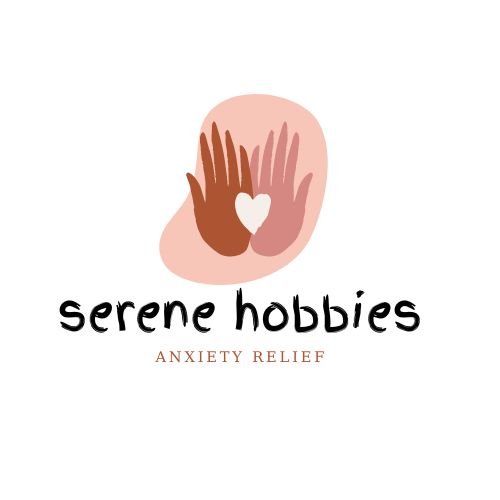When you're experiencing panic attack symptoms, several peaceful activities can help you regain control and calm. You'll find relief through deep breathing while walking, which naturally regulates your nervous system as you focus on deliberate steps and breath counts. Swimming offers a gentle, floating sanctuary where rhythmic movements and water resistance soothe anxiety. Outdoor stretching and forest bathing connect you with nature's calming elements, while light gardening tasks ground you in the present moment. These mindful movement practices provide immediate comfort and can become powerful tools in your anxiety management toolkit.
Deep Breathing While Walking

Walking around while practicing deep breathing serves as a powerful combo technique for managing panic attacks. When you feel anxiety building, start walking at a slow, steady pace in a safe area – whether it's around your home, in your backyard, or on a quiet street.
As you walk, focus on breathing deeply through your nose for four counts, holding for two counts, then exhaling through your mouth for six counts.
You'll want to keep your shoulders relaxed and your steps deliberate as you maintain this breathing pattern. The physical movement helps release muscle tension while the controlled breathing increases oxygen flow to your brain, naturally calming your nervous system.
If you're indoors, try walking in a figure-eight pattern or back and forth in a hallway.
To enhance the effectiveness, you can count your steps in rhythm with your breath or quietly say "in" and "out" as you breathe.
If thoughts start racing, gently redirect your focus to the sensation of your feet touching the ground and the steady flow of your breath. This combination of movement and breathing gives your mind something concrete to focus on while helping your body release excess adrenaline.
Swimming With Mindful Movements
Gliding through water offers a uniquely therapeutic approach to managing panic attacks. The gentle resistance and buoyancy create a calming, weightless sensation that can help ground you during anxious moments. When you're swimming, focus on each deliberate movement while maintaining awareness of your breath and the water's soothing touch against your skin.
Practice these mindful swimming techniques to maximize the anxiety-reducing benefits:
- Concentrate on the rhythm of your strokes, timing them with your breath to create a meditative pattern.
- Float on your back and observe the sky or ceiling, letting thoughts pass by like clouds.
- Try water walking in the shallow end, feeling the resistance with each step.
- Perform slow underwater movements, paying attention to how your body parts interact with the water.
- Practice treading water while focusing solely on the present moment.
Swimming engages your entire body while providing a safe space to process anxiety. The water's natural pressure acts like a gentle embrace, potentially lowering blood pressure and heart rate.
Remember to start slowly and choose a time when the pool isn't crowded to guarantee you're comfortable exploring these techniques.
Gentle Stretching Outdoors

Taking your stretching routine outside can transform a simple anxiety management practice into a deeply grounding experience. When panic symptoms arise, you'll find that combining gentle movement with fresh air and natural surroundings can help regulate your breathing and calm your nervous system. Choose a quiet spot in your yard, a local park, or any peaceful outdoor space where you feel safe and comfortable.
| Stretch Type | Duration | Benefits |
|---|---|---|
| Forward Fold | 30 sec | Releases neck and back tension |
| Cat-Cow | 1 min | Promotes deep breathing |
| Child's Pose | 2 min | Calms racing thoughts |
| Shoulder Rolls | 45 sec | Eases upper body stress |
| Side Stretch | 30 sec | Opens breathing pathways |
Start with simple stretches that don't require equipment or advanced flexibility. Focus on the sensations beneath your feet – whether it's grass, sand, or a yoga mat on concrete. Time your movements with your breath, and if thoughts begin racing, redirect your attention to the sounds of nature around you. You'll often find that outdoor stretching becomes a multi-sensory anchor that helps interrupt the panic cycle before it intensifies.
Forest Bathing Activities
Nature's ancient practice of forest bathing offers a powerful antidote to panic attacks through mindful immersion in woodland environments. When you're feeling overwhelmed, head to a nearby forest or wooded area to engage in this Japanese-inspired practice called shinrin-yoku.
You'll find that the combination of fresh air, natural sounds, and organic compounds released by trees can help calm your nervous system and reduce anxiety symptoms.
To practice forest bathing effectively, choose a quiet trail and move slowly through the environment, engaging all your senses. You don't need special equipment or training – just an openness to experience nature fully.
- Walk barefoot on soft forest soil to ground yourself and connect with the earth's energy
- Touch different tree bark textures and feel moss beneath your fingers
- Listen intently to bird songs, rustling leaves, and flowing water
- Breathe deeply, taking in the forest's natural aromatherapy
- Find a comfortable spot to sit quietly and observe the subtle movements around you
As you practice forest bathing regularly, you'll develop a deeper connection with nature that can serve as a reliable tool for managing panic attacks and reducing overall stress levels.
Light Garden Exercise

Gentle garden activities offer another outdoor approach to managing panic attacks while staying close to home. When anxiety builds, you'll find that simple tasks like weeding, pruning, or planting can help ground you in the present moment. The repetitive nature of these activities naturally slows your breathing and redirects your focus from anxious thoughts.
Choose activities that match your current energy level and don't require complex decision-making. Start with these beginner-friendly garden tasks that promote mindfulness:
| Activity | Anxiety-Reducing Benefit |
|---|---|
| Watering plants | Creates a soothing rhythm |
| Deadheading flowers | Requires gentle focus |
| Light weeding | Provides tactile grounding |
| Leaf sweeping | Encourages steady breathing |
You don't need a large garden to benefit from these exercises. A small patio with potted plants or even a windowsill herb garden can provide similar calming effects. Remember to pace yourself and take breaks when needed. If you're new to gardening, start with just 10-15 minutes of activity and gradually increase the duration as you become more comfortable.
Frequently Asked Questions
How Long Should I Continue These Peaceful Activities During a Panic Attack?
You'll want to continue calming activities until you feel your symptoms subsiding, typically 20-30 minutes. Don't rush the process – stay with it until your breathing normalizes and your anxiety level decreases considerably.
Can I Practice These Activities With a Support Person Nearby?
Yes, you'll benefit from having a supportive person nearby while practicing calming techniques. They can help you feel safe, provide reassurance, and assist if needed. Just let them know how they can best support you.
What Time of Day Works Best for Panic-Reducing Outdoor Activities?
You'll find the morning and early evening offer ideal times for calming outdoor activities. You can enjoy milder temperatures, less crowded spaces, and natural light that helps regulate your mood and anxiety levels.
Should I Avoid Caffeine Before Engaging in These Calming Exercises?
Yes, you'll want to skip caffeine before calming exercises. It can heighten anxiety and interfere with relaxation. If you're planning these activities, it's best to avoid coffee, energy drinks, and tea beforehand.
How Do I Recognize When These Activities Aren't Enough for My Symptoms?
You'll need professional help if your symptoms persist despite coping activities, you're unable to function daily, or you experience frequent panic. Don't wait – reach out to a mental health provider.
In Summary
You'll find these peaceful activities can greatly reduce your panic attack symptoms when practiced regularly. Whether you're taking mindful walks, swimming with intention, stretching in nature, forest bathing, or tending to your garden, you're giving your mind and body valuable tools to manage anxiety. Remember, it's not about perfection – it's about finding what works best for you and making it part of your daily routine.





Leave a Reply